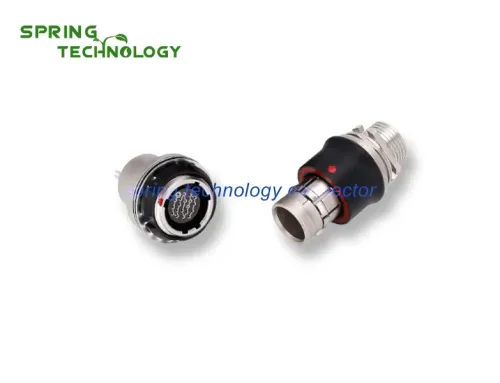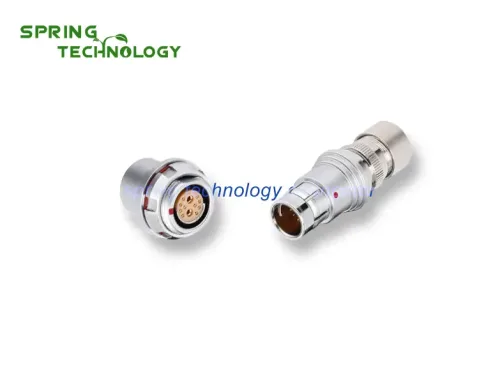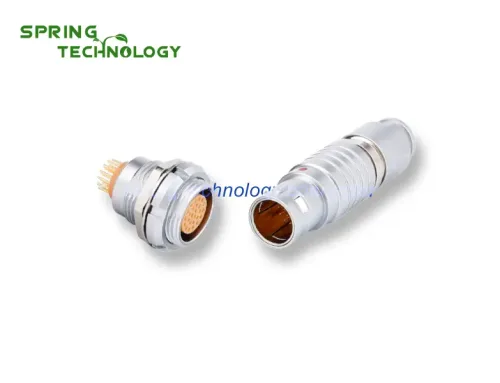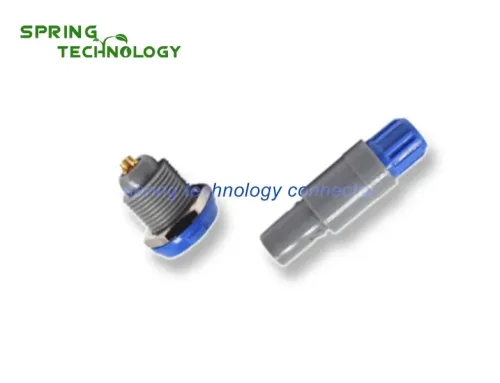There are many kinds of electronic connector analysis during the manufacturing process and technical stage of the connector, but the manufacturing process is basically the same. The manufacturing of connectors can usually be divided into four stages: stamping, plating, injection molding and assembly.
1.Stamping
The manufacturing process of electronic connectors usually starts with stamped pins. Electronic connectors (pins) are stamped from thin metal strips for large high-speed punching machines. One end of a large roll of metal belt is fed into the front end of the punching machine, and the other end is wound into a winding pulley through the hydraulic table of the punching machine.
2.Plating
Immediately after stamping, the connector pins should be sent to the plating area. At this stage, the electrical contact surfaces of the connector will be plated with various metal coatings. During the process of feeding stamped pins into electroplating equipment, problems similar to the stamping stage can also occur, such as pin twisting, chipping, or deformation. Such quality defects are easily detected by the techniques described herein.
However, for most machine vision system suppliers, many quality defects in the plating process still belong to the “forbidden area” of the inspection system. Electronic connector manufacturers want the inspection system to detect a variety of inconsistent defects, such as small scratches and pinholes on the plated surface of connector pins. Although these defects are easily identifiable for other products (such as aluminum can bottom caps or other relatively flat surfaces); however, due to the irregular and angled surface design of most electronic connectors, it is difficult to obtain adequate visual inspection systems Image to identify these tiny defects.
Because certain types of pins require multiple layers of metal, manufacturers also want inspection systems to be able to distinguish between various metal coatings to check that they are in place and that the ratio is correct. This is a very difficult task for a vision system using a black and white camera, because the gray levels of the images of different metal coatings are actually the same. Although cameras of color vision systems can successfully distinguish between these different metal coatings, the problem of difficult lighting remains due to the irregular angles and reflections of the coating surfaces.
3. Injection
The plastic housing of the electronic connector is made during the injection molding stage. The usual method is to inject molten plastic into the metal film and then quickly cool it. The so-called “leak” occurs when the molten plastic fails to completely fill the tire membrane, which is a typical defect detected during the injection molding stage. Other flaws include the filling or partial plugging of sockets (these sockets must be kept clean and unobstructed for proper connection to the pins during final assembly). The machine vision system for quality inspection after injection molding is relatively simple and easy to implement, because the backlight of the box can easily identify the leakage of the box seat and the insertion of the socket.
4. Assembly
The final stage in the manufacture of electronic connectors is finished assembly. There are two ways to insert plated pins into the injection cassette holder: single or combined inserts. Single insertion refers to inserting one pin at a time. Combining a pair of inserts Inserts multiple pins with the cassette holder simultaneously. Regardless of the insertion method, the manufacturer needs to check all pins are missing and correctly positioned during assembly. Another routine inspection task is related to distance measurement on mating surfaces of connectors.
As in the stamping phase, the assembly of the connector also challenges the automatic inspection system in terms of inspection speed. Although the beat of most assembly lines is one to two beats per second, for each connector through the camera, the vision system usually needs to complete several different inspection items. Therefore, the detection speed has once again become an important system performance index.
After assembly, the overall dimensions of the connector are much larger than the dimensional tolerances allowed for a single pin. This also brings another problem to the visual inspection system. For example, some connector housings are larger than one foot in size and have hundreds of pins, and the detection accuracy of each pin location must be within a thousandth of an inch. Obviously, testing of a one-foot connector is impossible
“Actual position” detection is another requirement for the connector assembly of the inspection system. This “actual position” is the distance from the top of each pin to the designated design reference line. The visual inspection system must draw this imaginary reference line on the inspection image to measure the “actual position” of each pin vertex and determine whether it meets quality standards. However, the reference point used to define this reference line is usually not visible on the actual connector, or sometimes appears on another plane and cannot be seen simultaneously in the same lens. Even in some cases, the plastic on the connector box must be wiped off to determine the position of the baseline.




